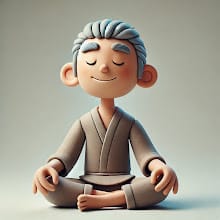Mindful Leadership: Digital Detox & Mental Clarity in a Hyperconnected World
Mindful leadership is not about eliminating technology; it’s about using it intentionally while making space for deep work, reflection, and meaningful human connection.

Now a days we find ourselves constantly checking emails, responding to Slack messages, and feeling mentally exhausted by the end of the day? Are digital distractions affecting our ability to focus, make decisions, and lead effectively?
In today’s always-on culture, leaders are expected to be responsive, available, and plugged in at all times. But the reality is that constant digital engagement leads to mental fatigue, reduced focus, and burnout. The ability to disconnect while fostering mindfulness is no longer a luxury. It is a leadership necessity.
The most effective leaders today are those who can balance productivity with presence, using mindfulness to navigate the overwhelming digital landscape. A digital detox, combined with intentional mindfulness practices, can help us reclaim focus, enhance decision-making, and cultivate a more engaged and resilient work culture.
When we take a mindful approach to technology, we prevent burnout, improve focus and clarity, strengthen emotional intelligence, and create a culture of presence. The expectation of 24/7 availability leads to mental exhaustion, impacting creativity, problem-solving, and long-term effectiveness. Multitasking and information overload impair cognitive function, while mindfulness enhances concentration and deep thinking. Being fully present fosters greater self-awareness, patience, and empathy, leading to stronger workplace relationships. When leaders model mindful digital habits, teams follow suit, leading to better collaboration and work-life balance.
Mindful leadership is not about eliminating technology. It is about using it intentionally while making space for deep work, reflection, and meaningful human connection.
How we start and end our day sets the tone for focus and clarity. Instead of reaching for our phones first thing in the morning, we can begin the day with ten minutes of meditation, breathwork, or journaling. During the workday, using the Pomodoro technique, focusing on deep work for 25 minutes, followed by a short mindfulness break, can improve concentration. At night, avoiding screens at least an hour before bed and replacing late-night scrolling with relaxation techniques like deep breathing or gratitude journaling can support better rest and mental clarity.
Creating a habit of starting meetings with a minute of stillness allows everyone to transition from reactive mode to presence. Encouraging single-tasking over multitasking by turning off notifications and fully engaging in conversations strengthens focus and connection. Mindful communication is another key leadership skill. Before replying to an email, taking a deep breath and pausing helps shift from reactive responses to more thoughtful, intentional communication.
Stepping away from screens throughout the day improves mental clarity and reduces stress. Taking a mindful ten-minute walk without our phones, eating lunch without distractions, or using simple breathwork techniques, like inhaling for four seconds, holding for seven, and exhaling for eight, can create space for better decision-making and deeper focus.
Leadership in a digital age is not about being constantly available. It is about being fully present. The best leaders recognize the power of stepping back, re-centering, and leading with intention. When we integrate mindful digital habits, we foster not just personal well-being, but a healthier, more engaged workplace for everyone.
For more insights on mindfulness and leadership, visit my blog at Just Breathe, where I share practical tools and strategies for integrating mindfulness into daily life.
How do you manage digital distractions as a leader? Have you tried mindfulness techniques in your workplace? Let’s discuss in the comments.
Always remember…JUST BREATHE.
"This article is for informational and reflective purposes only."

